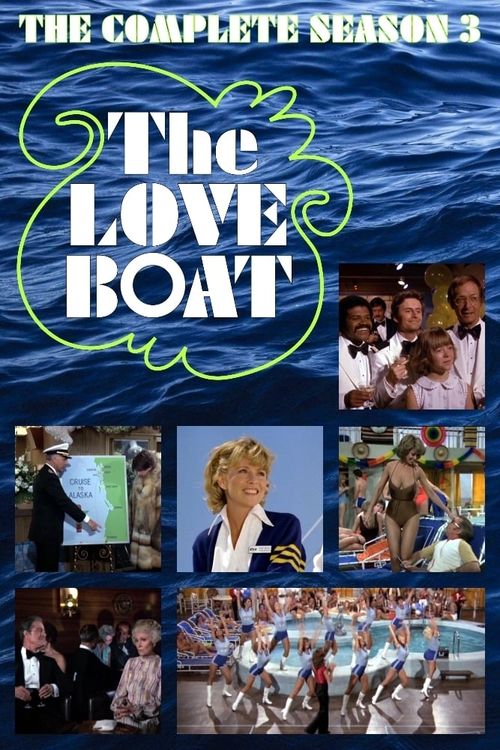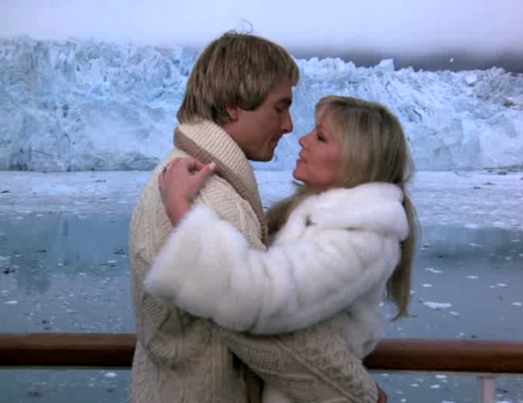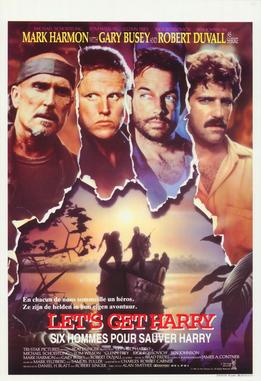Welcome to Retro Television Reviews, a feature where we review some of our favorite and least favorite shows of the past! On Wednesdays, I will be reviewing the original Love Boat, which aired on ABC from 1977 to 1986! The series can be streamed on Paramount Plus!
The Love Boat sets sail for season 3!
Episode 3.1 and 3.2 “The Alaskan Wedding Cruise: Carol and Doug’s Story/Peter and Alicia’s Story/Julie’s Story/Buddy and Portia’s Story”
(Dir by Roger Duchowny, originally aired on September 15th, 1979)
The third season of The Love Boat starts with a special voyage to Alaska and a two-hour running time. It’s double the guest stars, double the melodrama, double the goofiness, and double the romance! The opening also features new clips for Doc, Gopher, and Julie. Whereas the first two seasons introduced Doc listening to his own heartbeat, the third season opening features him laughing while leaning against a railing. Gopher’s new opening credit features him looking wistfully out at the ocean and it’s a much more mature look for him. As for Julie, she’s still smiling and perky but she’s let her hair grow out. If the first two seasons of The Love Boat featured Julie looking like the star of the high school drama department, she looks more like the most popular cheerleader now. As for the Captain, he continues to salute the camera and Isaac continues to do his signature pointing.
The episode opens in Canada. The boat is docked in Vancouver, where it has been rented out by a huge and wealthy wedding party. The boat will be sailing to Alaska. Isaac has been reading everything that he can find about Alaska and he spends most of the episode sharing trivia about the state’s history. Gopher, preparing for Alaska’s cold weather, buys a gigantic coat. Meanwhile, Doc Bricker makes jokes about his ex-wives and Capt. Stubing tries to keep everything professional. (“You’re not going to the North Pole!” he snaps at Gopher when he sees the size of his new fur coat.)
As for Julie, her mind is elsewhere. Alaska is where Jack (Tony Roberts) lives. Who is Jack? During the second season, he was a passenger who fell in love with Julie and who asked Julie to marry him. She knows that she’s going to see Jack in Alaska and she’s going to give him an answer as far as his proposal is concerned. (If you don’t remember Jack asking Julie to marry him, don’t feel bad. I had forgotten about it, too. Fortunately, the first hour of this episode is full of flashbacks to Jack’s previous episode.) Is Julie ready to settle down? While Julie tries to make up her mind, she also has to deal with the romantic intentions of the wedding party’s dorky best man (Donny Most).
As for the wedding party, Carol (Lisa Hartman) and Doug (Mark Harmon, sporting a truly unfortunate haircut) are looking forward to getting married, even though Doug’s ex-girlfriend (Caren Kaye) is also on the boat and determined to win Doug back. If that means jumping out a cake while wearing a bikini, she’ll do it. Doug is more concerned about the fact that his estranged, alcoholic father, Peter (Ray Milland) had turned up on the cruise despite having not been invited to or even informed about the wedding. Peter has stopped drinking and is trying to make peace with his son and his ex-wife, Alicia (Eleanor Parker). What Doug and Alicia do not know is that Peter is terminally ill. And what neither Doug nor Peter knows is that Alicia is on the verge of filing for bankruptcy.
Meanwhile, Carol’s plain-spoken grandfather (Lorne Greene) feels uncomfortable with all of the rich folks but then he meets Doug’s equally plain-spoken aunt (Audra Lindley). Could we be heading for a double wedding? It is The Love Boat, after all!
There aren’t really any big surprises on this episode but it’s likable nonetheless. For this episode, the crew and the cast actually sailed to Alaska and all the action was filmed during an actual cruise. The scenery is gorgeous, even if it’s obvious that the cast was frequently freezing while filming their scenes. By this point, the show’s regulars had their chemistry down perfectly and all of the 3rd season premiere’s guest stars are well-selected. I especially liked the performances of Lorne Greene, Audra Lindley, the great Ray Milland, and Tony Roberts. Julie and Jack’s reunion was far more touching that I think anyone would expect from a show like The Love Boat, with Tony Roberts playing the role of Jack so well that the viewer really did believe that, under different circumstances, he and Julie truly would have had a wonderful life together. This was a great way to start the third season.






 Once upon a time, there were two movies about the legendary Western lawman (or outlaw, depending on who is telling the story) Wyatt Earp. One came out in 1993 and the other came out in 1994.
Once upon a time, there were two movies about the legendary Western lawman (or outlaw, depending on who is telling the story) Wyatt Earp. One came out in 1993 and the other came out in 1994. Let’s Get Harry opens deep in the jungles of Columbia. The newly appointed American Ambassador (Bruce Gray) is touring a newly constructed water pipeline when suddenly, terrorist drug smugglers attack! The Ambassador, along with chief engineer Harry Burck (Mark Harmon, long before NCIS), is taken hostage. Drug Lord Carlos Ochobar announces that both the Ambassador and Harry will be executed unless the U.S. government immediately releases Ochobar’s men. However, the policy of the U.S. government is to not negotiate with terrorists. As grizzled mercenary Norman Shrike (Robert Duvall) explains it, nobody gives a damn about a minor ambassador.
Let’s Get Harry opens deep in the jungles of Columbia. The newly appointed American Ambassador (Bruce Gray) is touring a newly constructed water pipeline when suddenly, terrorist drug smugglers attack! The Ambassador, along with chief engineer Harry Burck (Mark Harmon, long before NCIS), is taken hostage. Drug Lord Carlos Ochobar announces that both the Ambassador and Harry will be executed unless the U.S. government immediately releases Ochobar’s men. However, the policy of the U.S. government is to not negotiate with terrorists. As grizzled mercenary Norman Shrike (Robert Duvall) explains it, nobody gives a damn about a minor ambassador.

